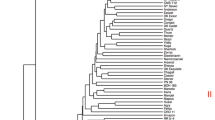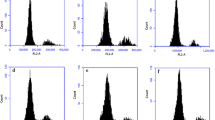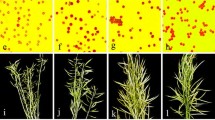Summary
Allopolyploids are widely spread in the plant kingdom. Their success might be explained by positive interactions between homoeologous genes on their different genomes, similar to the positive interactions between different alleles of one gene causing heterosis in heterozygous diploid genotypes. In allopolyploids, such interactions can also occur in homozygous genotypes, and may therefore be called “fixed heterosis”. As to our knowledge, no experimental data are available to support this hypothesis. We propose an experimental approach to quantify “fixed heterosis” in resynthesised Brassica napus and the detection of loci contributing to “fixed heterosis” via comparative QTL mapping in B. napus and its parental species B. rapa and B. oleracea. In order to develop a genetically balanced material, interspecific crosses between 21 Brassica rapa and 16 Brassica oleracea doubled haploid or inbred lines were performed. In total 3485 vital embryos have been obtained from 9514 pollinated buds. The success of interspecific hybridisation was highly depending on the maternal genotype (B. rapa) and ranged from 0 to 1.18 embryos per pollinated bud. For the genetic characterisation of the B. rapa and B. oleracea lines, a dendrogram was constructed based on 273 RAPD markers. Thus a well-characterised material is now available, which is suitable to analyse the effects of “fixed heterosis” and the interactions between homoeologous genes in allopolyploid species.
Similar content being viewed by others
References
Arabidopsis Genome Initiative, 2000. Analysis of the genome sequence of the flowering plant Arabidopsis thaliana. Nature 408: 796–815.
Diederichsen, E. & M.D. Sacristan, 1994. The use of ovule culture in reciprocal hybridization between B. campestris L. and B. oleracea L. Plant Breeding 113: 79–82.
Goff, S.A., D. Ricke, T.H. Lan, G. Presting, R. Wang, M. Dunn, J. Glazebrook, A. Sessions, P. Oeller, H. Varma et al., 2002. A draft sequence of the rice genome (Oryza sativa L. ssp. japonica). Science 296: 92–100.
Jaccard, P., 1908. Nouvelles recherches sur la distribution florale; Bull Soc Vaud Sci Nat 44: 223–270.
Lagercrantz, U. & D.J. Lydiate, 1996. Comparative Genome Mapping in Brassica. Genetics 144: 1903–1910.
Levy, A.A. & M. Feldman, 2002. The impact of polyploidy on grass genome evolution. Plant Physiol. 130: 1587–1593.
Lu, C.M., B. Zhang, F. Kakihara & M. Kato, 2001. Introgression of genes to cultivated Brassica napus through resynthesis of B. napus and the accompanying change in fatty acid composition. Plant Breeding 120: 405–410.
Mac Key, J., 1976. Genetic and evolutionary principles of heterosis. In: Jánossy, A. & F.G.H. Lupton (Eds.) Heterosis in Plant Breeding, Proc. 7th Congress of EUCARPIA, Budapest 24–29 June 1974, pp. 17–33.
Matsuzawa, Y., 1983. Studies on the interspecific hybridization in genus Brassica. II. Crossability in interspecific cross, B. oleracea L. and B. campestris L. Jpn J Breed 33: 321–330.
Rohlf, F.J., 2000. NTSYS-pc: Numerical taxonomy and multivariate analysis system. Version 2.1 Exeter Publications, New York, USA.
UN, 1935. Genome analysis in Brassica with special reference to the experimental formation of B. napus and peculiar mode of fertilization. Jap J Bot 7: 389–452.
Utz, H.F., 1992: Plabstat, Computerprogramm zur statistischen Analyse von pflanzenzüchterischen Experimenten, Version 2F. Institut für Pflanzenzüchtung, Saatgutforschung und Populationsgenetik der Universität Hohenheim.
Wendel, K.H., 2000. Genome evolution in polyploids. Plant Mol Biol 42: 225–249.
Author information
Authors and Affiliations
Corresponding author
Rights and permissions
About this article
Cite this article
Abel, S., Möllers, C. & Becker, H.C. Development of synthetic Brassica napus lines for the analysis of “fixed heterosis” in allopolyploid plants. Euphytica 146, 157–163 (2005). https://doi.org/10.1007/s10681-005-3364-7
Received:
Accepted:
Issue Date:
DOI: https://doi.org/10.1007/s10681-005-3364-7




